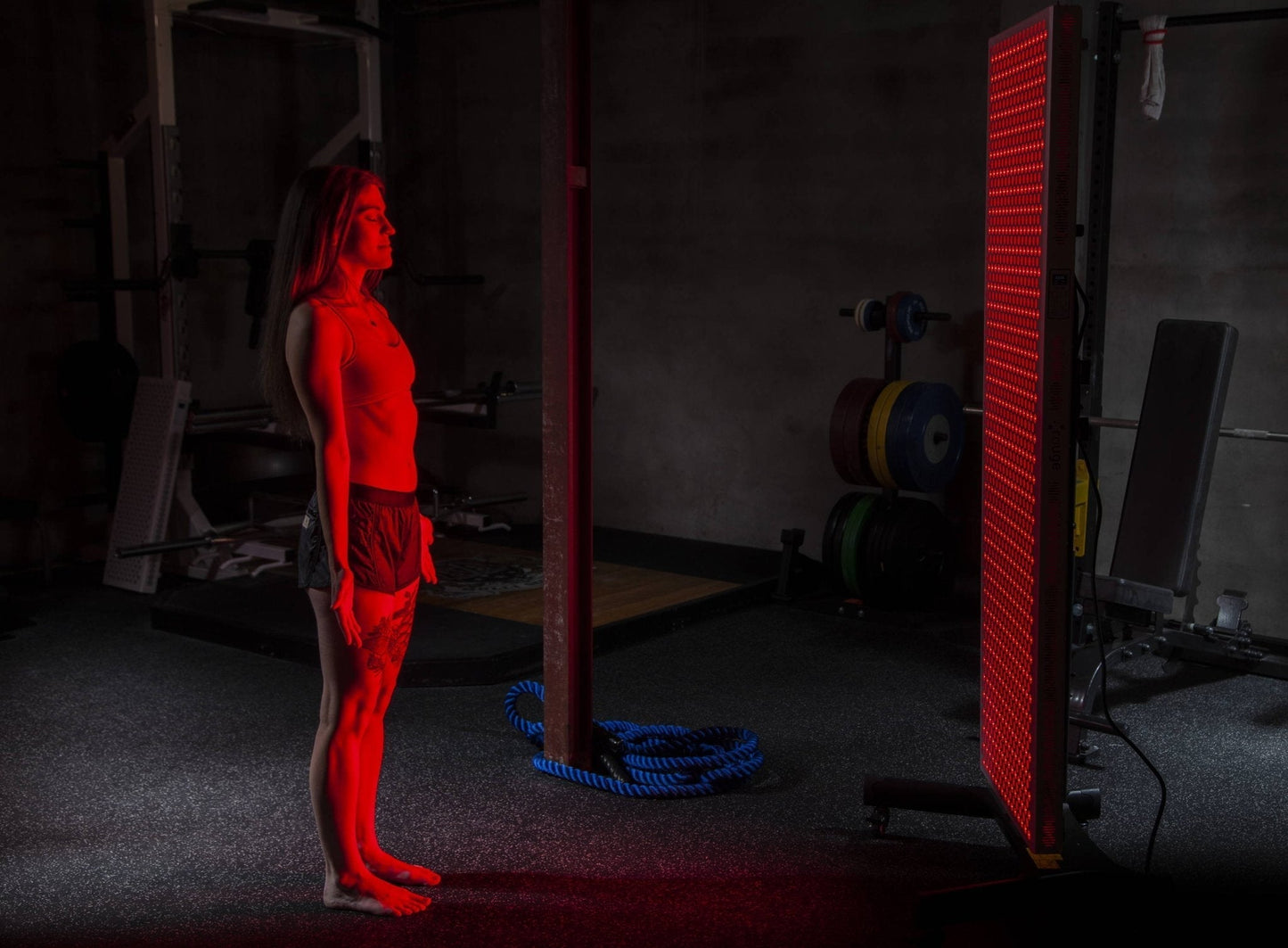
If you’ve experienced joint or limb pain after intense physical activity, you may be dealing with tendonitis. Even everyday repetitive movements—like typing, lifting, or reaching—can trigger this painful condition. Commonly known as tennis elbow, jumper’s knee, swimmer’s shoulder, or pitcher’s shoulder, tendonitis affects people of all activity levels.
What Is Tendonitis?
Tendons are thick, fibrous tissues that connect muscles to bones, allowing smooth movement. When overused or strained, they can become inflamed—a condition known as tendonitis. It commonly affects the wrists, elbows, shoulders, knees, and heels.
Symptoms vary from mild discomfort to severe pain. Many people experience a dull ache, sharp pain, or burning sensation in the affected area. Swelling and tenderness are also common, along with redness and warmth over the tendon. In some cases, stiffness or difficulty moving the joint can make everyday activities challenging.
Treating Tendonitis: Why Red Light Therapy Stands Out
Traditional treatments like rest, ice, and over-the-counter pain relievers can help, but they don’t always address the root of the issue. Red light therapy is an advanced, non-invasive option that accelerates recovery by reducing inflammation, improving circulation, and promoting cellular repair—right from the comfort of your home.
Unlike temporary pain relief methods, red light therapy targets the source of tendon inflammation, helping you heal faster and get back to your routine. For persistent cases, physical therapy and eccentric strengthening exercises can reinforce the muscles supporting the tendon. In rare instances, surgery may be required.
Experience Faster Recovery with Red Light Therapy
Tendonitis can slow you down, but red light therapy can help speed up recovery. Whether you’re an athlete, fitness enthusiast, or just someone dealing with daily wear and tear, this science-backed therapy offers a natural, drug-free way to relieve pain and restore mobility.

The Benefits of Red Light Therapy for Tendonitis
Red light therapy uses specific red and near-infrared wavelengths to penetrate human tissue at controlled doses. Researchers have published over 3,000 studies exploring its effectiveness, applications, and benefits—including its role in treating tendonitis.
This non-invasive therapy has minimal side effects and has been shown to reduce pain, inflammation, and stiffness associated with tendonitis. Several studies have examined its impact, with most patients reporting significant symptom relief.
A small trial involving seven participants with Achilles tendonitis found that red light therapy reduced pain and inflammation when applied at a dose of 5.4 Joules per point. A 2016 study further confirmed its effectiveness, with participants experiencing improved function and reduced discomfort.
A 2010 study explored red light therapy's effects on tendinopathy, a condition closely related to tendonitis. While tendinopathy involves the breakdown of collagen in the tendon, whereas tendonitis is caused by inflammation, the study concluded that red light therapy could support tendon healing when applied at optimal levels.
For athletes, the ability to return to play quickly after an injury is critical. A pilot study found that 830 nm LED phototherapy significantly shortened recovery time across multiple injuries, with no reported side effects.
In a randomized, double-blind study, researchers assessed pain levels before, during, and four weeks after red light therapy treatment using both subjective and objective measurements. Results showed a significant reduction in pain compared to the placebo group, demonstrating red light therapy's effectiveness for acute tendonitis.
With mounting research highlighting its anti-inflammatory benefits, red light therapy stands out as a promising treatment for tendonitis and other inflammation-driven conditions.

Techniques to Prevent Tendonitis
Preventing tendonitis starts with reducing strain on your tendons, using proper technique, and allowing adequate recovery time. Making small adjustments to your routine can go a long way in avoiding irritation and injury.
Modifying your workouts can help by focusing on different muscle groups to avoid overuse. Low-impact exercises like swimming and cycling are great alternatives that reduce stress on the tendons while keeping you active.
Stretching after exercise improves flexibility and reduces strain, while proper lifting techniques—using your legs instead of your back—help protect tendons from unnecessary stress.
For those who work at a desk, an ergonomic setup can prevent strain-related tendonitis. Adjust your chair, monitor, desk, and keyboard to align with your natural posture. Adding a red light therapy device, like our Tabletop model, to your workstation can further support recovery by increasing circulation and reducing inflammation.
Red light therapy is a proven, non-invasive treatment that enhances blood flow and stimulates collagen production, strengthening and improving tendon flexibility. Consulting a qualified practitioner can help tailor treatment to your specific needs for optimal results.
With clinical research backing its effectiveness, red light therapy is more accessible than ever—offering a powerful solution for tendonitis relief.
Shop today and start your recovery!
Sources & Studies
Bjordal JM, Lopes-Martins RA, Iversen VV. A randomized, placebo controlled trial of low level laser therapy for activated Achilles tendinitis with microdialysis measurement of peritendinous prostaglandin E2 concentrations. Br J Sports Med. 2006 Jan;40(1):76-80; discussion 76-80. doi: 10.1136/bjsm.2005.020842. PMID: 16371497; PMCID: PMC2491942.
Foley J, Vasily DB, Bradle J, Rudio C, Calderhead RG. 830 nm light-emitting diode (led) phototherapy significantly reduced return-to-play in injured university athletes: a pilot study. Laser Ther. 2016 Mar 31;25(1):35-42. doi: 10.5978/islsm.16-OR-03. PMID: 27141153; PMCID: PMC4846838.
Tumilty S, Mani R, Baxter GD. Photobiomodulation and eccentric exercise for Achilles tendinopathy: a randomized controlled trial. Lasers Med Sci. 2016 Jan;31(1):127-35. doi: 10.1007/s10103-015-1840-4. Epub 2015 Nov 26. PMID: 26610637.
Tumilty S, Munn J, McDonough S, Hurley DA, Basford JR, Baxter GD. Low level laser treatment of tendinopathy: a systematic review with meta-analysis. Photomed Laser Surg. 2010 Feb;28(1):3-16. doi: 10.1089/pho.2008.2470. PMID: 19708800.
